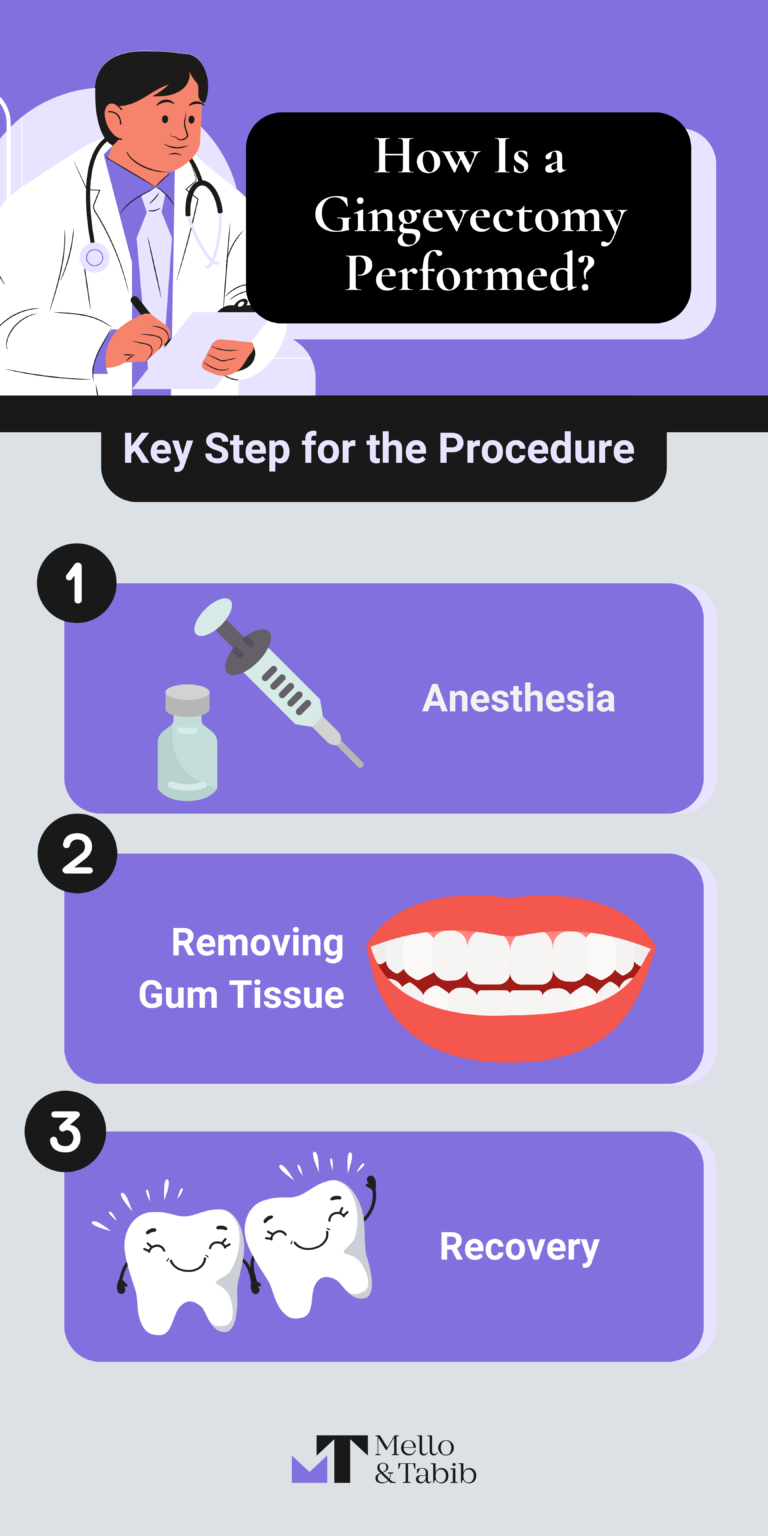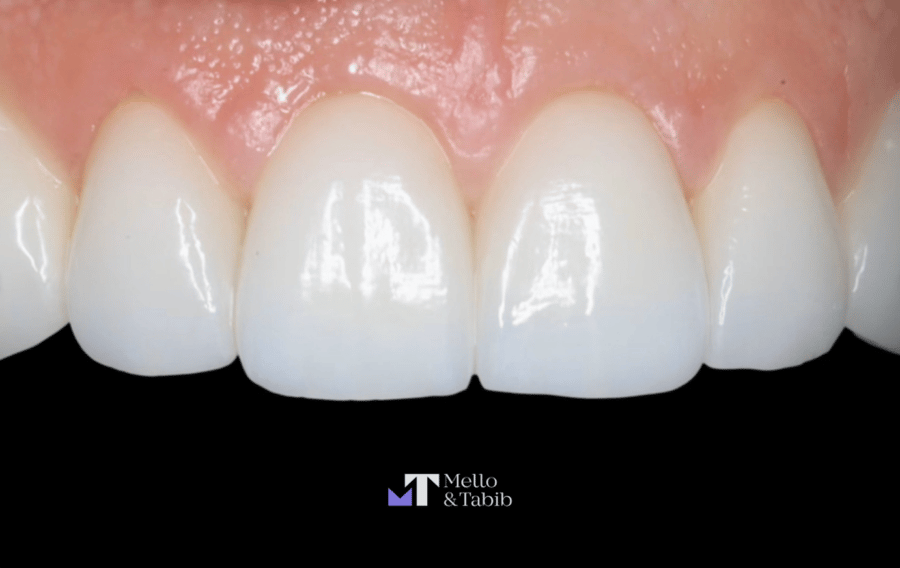
Have you ever heard of a gingivectomy and wondered what it is? A gingivectomy is a dental procedure that might not be as well-known as fillings or crowns, but it plays an important role in oral health.
At NYC Smile Design, we’ve performed this procedure for many patients, witnessing first-hand its benefits for both oral health and aesthetic improvements.
This blog aims to educate you about what gingivectomy is, its purpose in dentistry, and how it can help with various oral health issues. Whether you’re just curious or considering the procedure for yourself, this information will help you understand what a gingivectomy involves.
What Does Gingivectomy Mean?
The term ‘gingivectomy’ might sound complicated, but it’s quite straightforward when broken down. ‘Gingiva’ means gums, and ‘ectomy’ means removal. So, a gingivectomy is a dental procedure where a dentist or periodontist (a gum specialist) removes part of the gums. But why would someone need part of their gums removed? Let’s dive into the reasons.

Why Is a Gingivectomy Done?
Gingivectomy is typically done for two main reasons: health and aesthetics.
Health Reasons
In terms of oral health, a gingivectomy can be a crucial intervention. Sometimes, due to factors like certain medications, hormonal changes, or genetic predispositions, the gums can overgrow. This excessive gum tissue can make proper oral hygiene challenging. Overgrown gums tend to trap food particles and bacteria more easily, creating ideal conditions for plaque buildup. This can lead to tooth decay and, more seriously, gum disease, which if left untreated, can affect the supporting structures of the teeth and lead to tooth loss.
In such cases, a gingivectomy becomes necessary to remove the excess or diseased gum tissue. By doing so, it helps to restore the health of the gums, making it easier to clean the teeth effectively and reducing the risk of developing gum-related diseases. The procedure helps in re-establishing a healthy gum-to-tooth ratio, which is essential for maintaining overall oral health.
Aesthetic Reasons
From an aesthetic standpoint, a gingivectomy is often sought by individuals who feel self-conscious about their smile due to uneven gum tissue. This condition, often referred to as a ‘gummy smile,’ occurs when the gums cover a significant portion of the teeth, making them appear short and affecting the smile’s overall appearance. In such cases, even if the teeth are perfectly healthy and aligned, the excessive gum tissue can detract from the aesthetic appeal of the smile.
A gingivectomy can effectively address this concern by carefully removing the excess gum tissue and reshaping the gum line. This procedure exposes more of the natural tooth, creating a more proportionate and aesthetically pleasing smile. The result is a more balanced appearance between the gums and teeth, enhancing the person’s smile and often boosting their self-confidence.
How Is a Gingivectomy Performed?
A gingivectomy is typically performed in a dentist or periodontist’s office. The procedure involves several key steps, each critical to ensuring the treatment’s success and comfort. Here’s a detailed breakdown of the process:

1. Anesthesia
The first step in a gingivectomy is ensuring your comfort during the procedure. To achieve this, your dentist or periodontist will administer local anesthesia to numb the area around your gums. This anesthesia is similar to what you might receive during a filling or tooth extraction. It works quickly to numb the targeted area, ensuring that you won’t feel any pain or discomfort as the procedure is performed. The numbness will typically last for a few hours, ensuring comfort throughout the treatment.
2. Removing Gum Tissue
Once the area is numbed, the actual process of removing the gum tissue begins. Your dentist or periodontist will use specialized dental instruments to carefully and precisely remove the excess or diseased gum tissue. This step is performed with great care and precision, as the goal is to reshape and contour the gum line to improve the appearance of your smile or to address specific oral health issues. The dentist will focus on removing just the right amount of tissue to achieve the desired result without impacting the surrounding healthy tissue. The dentist will do this by either using special ceramic burrs on handpieces (drills) or a laser or a scalpel depending on location, amount of tissue that needs to be removed, and the thickness of the tissue.
3. Recovery
After the gingivectomy, the focus shifts to your recovery and healing. Immediately following the procedure, you may experience some swelling and discomfort, which is normal. Your dental professional will provide you with specific post-operative instructions on how to care for your gums. This might include recommendations for oral hygiene practices, such as gentle brushing and rinsing with a special mouthwash, as well as guidelines on what foods to avoid during the healing process. You may also be recommended to take Tylenol or Ibuprofen. It’s important to follow these instructions closely to ensure a smooth and quick recovery. The healing process is generally quick, with most patients experiencing significant healing within a week or two.

What Are the Benefits of a Gingivectomy?
The benefits of a gingivectomy depend on why you’re having it done. If it’s for health reasons, removing excess or diseased gum tissue can reduce the risk of tooth decay and gum disease, leading to better oral health overall. If it’s for aesthetic reasons, it can significantly improve the appearance of your smile, boosting your confidence and self-esteem.
Conclusion: A Step Toward Better Oral Health
A gingivectomy can be a valuable procedure for both health and aesthetic reasons. If you think you might benefit from this treatment, or just want to learn more about it, talking to a dental professional is a great next step. They can provide personalized information and advice based on your individual oral health needs. Remember, understanding different dental procedures like gingivectomy is part of taking an active role in your oral health care.
For those interested in exploring similar treatments, we invite you to read our blog, “Gum Lift Options: Laser vs. Non-Laser Procedures.” This resource will give you further insights into other gum contouring techniques and help you understand the differences between laser and non-laser methods. Whether you’re considering a gingivectomy or other gum reshaping procedures, having comprehensive knowledge will guide you in making the best decision for your oral health and the beauty of your smile.
Topics:

